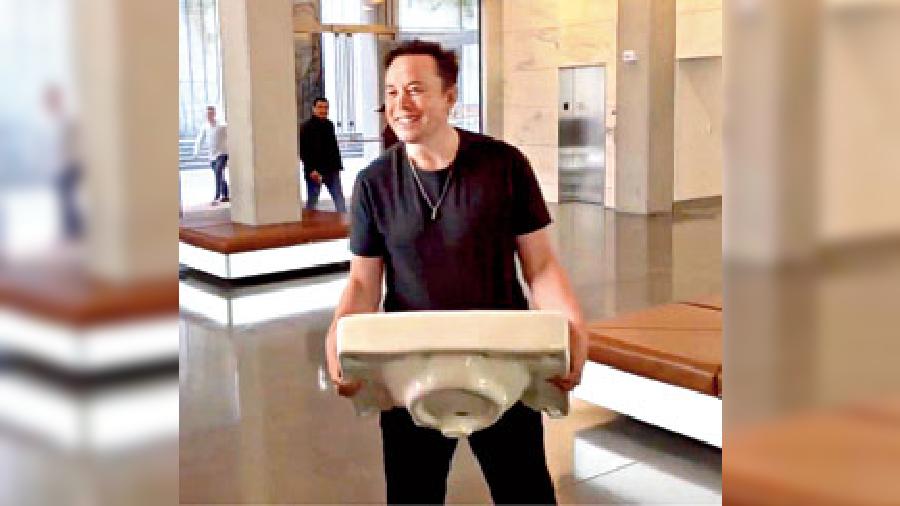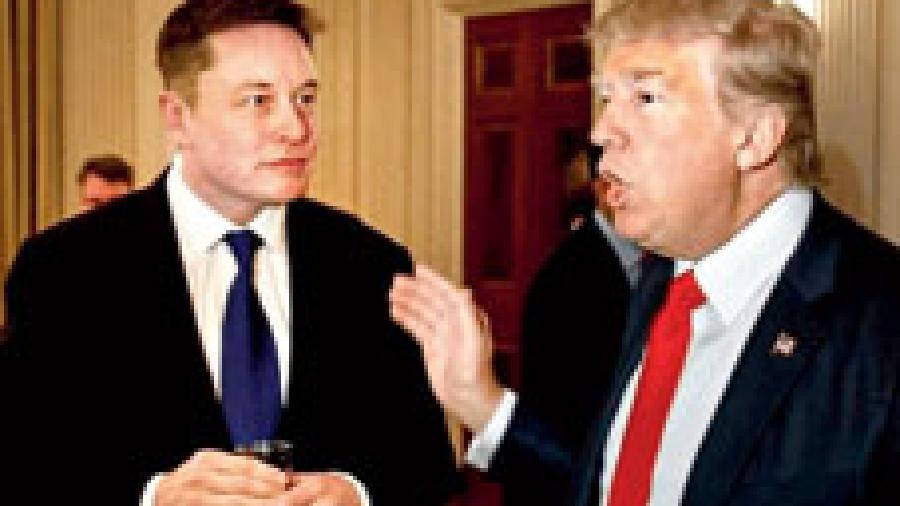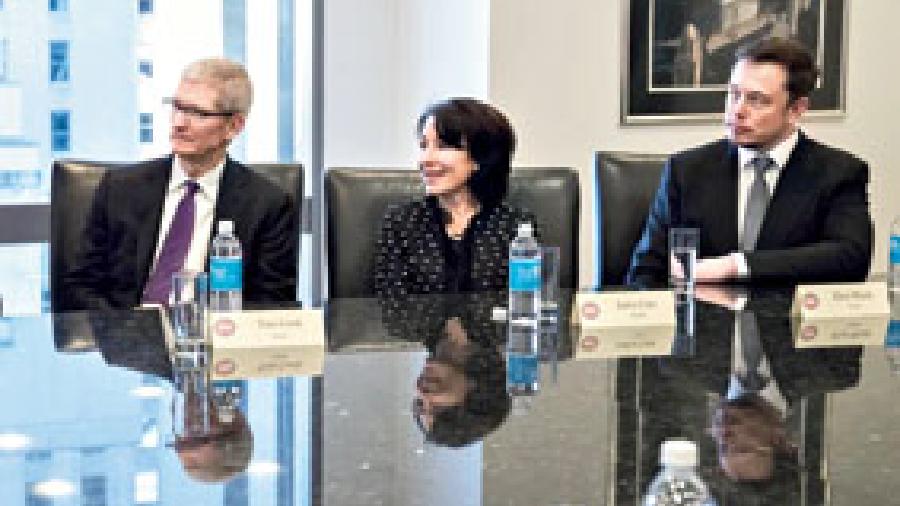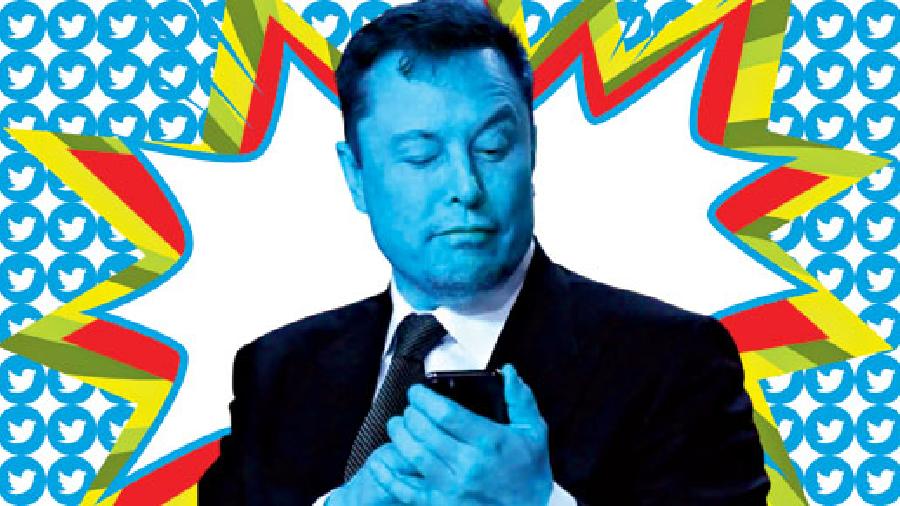After months of legal battles, Elon Musk became the owner of Twitter on October 27 but since then it has mostly been about controversial moves from the 51-year-old CEO of the company. Here’s the timeline so far.

Elon Musk enters Twitter HQ in San Francisco with a kitchen sink
October 4
The Tesla CEO submits a proposal to move forward with the acquisition of Twitter at the originally agreed-upon price of $44 billion ($54.20 per share) on the condition that Twitter drops its lawsuit.
October 26
Elon Musk tweets a video of him carrying a kitchen sink into Twitter headquarters and changes his Twitter bio to “Chief Twit”, signaling the buyout is near completion.
October 27
Musk takes control of Twitter and soon, Parag Agrawal gets fired from his job as CEO and joining him were CFO Ned Segal and Vijaya Gadde, Twitter’s head of legal policy, trust and safety.
October 30
The new owner considers bringing back Vine, a short-form video app; floats a Twitter poll. At the same time reports appear that Musk was planning to roll out a new Twitter Blue plan for $20 a month, which Platformer’s Casey Newton says would be $5 a month.
October 31
Musk is confirmed as Twitter’s CEO through a securities filing and he becomes the sole director of the company. A report appears in The Washington Post stating Musk’s plan to lay off 25 per cent of Twitter’s workforce.
November 1
The CEO tweets about his idea to charge $8 a month for a verified blue check mark as part of a new Twitter Blue subscription plan after writer Stephen King tweets his dissatisfaction. So far, Twitter Blue came for $5 in select markets while verification wasn’t a part of the package.
November 2
Bloomberg reports that Musk wants to cut Twitter’s workforce by half or about 3,700 jobs.
November 3
Reports appear that Musk is planning to remove “days of rest” from Twitter’s employee calendars and plans to cancel the company’s remote work policy.
November 4
Musk lays off half of Twitter employees as part of a cost-cutting measure. Many advertisers begin to stop or pause their spending on the platform. Companies like General Motors, General Mills and Pfizer decide to temporarily pause their ad campaigns on Twitter. At the same time, Musk tweets that Twitter has had a “massive drop” in revenue while blaming activist groups pressuring advertisers.
November 5
iOS users catch a glimpse of the $7.99-a-month Twitter Blue subscription plan but it quickly disappears. Meanwhile, Twitter co-founder and former CEO Jack Dorsey weighs in to say that he is “responsible” for why everyone is in this situation.
November 9
Twitter’s rollout of a new verification system turns out messy while the company begins to add grey check marks and an “official” label to high-profile accounts, only to be scrapped hours later. At the same time, he continues to appease advertisers. “I don’t think having hate speech next to an ad is great. Obviously,” he said.
November 10
Musk and his team sends employees an email saying remote work is over. Dorsey, before quitting as CEO, had allowed a work-from-anywhere culture. The world’s richest man also reportedly told employees bankruptcy was a possibility, Bloomberg reported.
November 11
The new Twitter Blue subscription disappears.
November 12
There are reports of 4,400 of roughly 5,500 Twitter contractors being shown the exit.
November 13
SpaceX, which is Musk’s aerospace company, reportedly buys an advertising package on Twitter.
November 14
Musk announces Twitter is turning off microservices “bloatware”, which he claims isn’t necessary for the site to work.
November15
Employees who spoke up against Musk are fired.
November 16
Musk demands an “extremely hardcore” culture at “Twitter 2.0” and anyone who didn’t agree was asked to leave with three months of severance pay.
November 17
Twitter users fear that the platform would collapse. Up to 75 per cent of remaining Twitter workers want to leave, according to Fortune and Bloomberg.
November 18
Elon Musk wants to meet engineers with codes to help him better understand the platform. On the same day, he tweets that conservative media personality Jordan Peterson, right-wing satire site The Babylon Bee and comedian Kathy Griffin will have their banned accounts reinstated.
November 19
Elon Musk restores the Twitter account of former US president Donald Trump as groundwork for a new presidential election is being laid.

File picture of Elon Musk with former US President Donald Trump
November 25
After allowing former US President Donald Trump back on Twitter, the platform’s new owner grants “a general amnesty” to accounts that had been suspended. These accounts will return, the world’s richest man has posted, following a poll taken earlier this week; users could answer ‘yes’ or ‘no’ to whether the platform should restore affected accounts. Musk’s poll attracted 3.2 million responses and 72.4 per cent voted in favour of “amnesty”.
November 25
News of Twitter verification marks being colour coded comes through. Musk says verified accounts under the new system would carry a blue tick — or checkmark — for individuals, a grey tick for “government” and a gold tick for companies.

File picture of Tim Cook and Elon Musk at a meeting of prominent executives from the tech industry in 2016
November 28
Elon Musk claims that Apple threatened to remove Twitter from App Store and says that Apple has drastically cut down on advertising on the platform.
November 29
An update becomes visible. Twitter said that effective November 23, it is no longer enforcing its Covid-19 misleading information policy, meaning the platform will not prioritise removing or tagging misleading health information related to Covid-19. The policy was brought into force in December 2020.
November 29
Casey Newton and Zoe Schiffer of the tech journal Platformer report that Twitter had started to reinstate “roughly 62,000 accounts with more than 10,000 followers” apiece. The list includes “one account that has over five million followers, and 75 accounts with over one million followers”.
